Fake "BSOD: Error 333 Registry Failure" has attacked many PC users
Victim 1: I have a screen shot on Microsoft Edge that says BSOD Error 333. Registry Failure. And also this code: 0x000000CE. I just cant seem to get rid or make it go away, so in other words, its there to stay unless I do something. There are a few phone numbers that I must call,depending which country I am in for help.Can someone explain why that screen is there? What did I do wrong?

Victim 2: I get a blue screen error 0x000000ce. also bsod 333 regestry failure of operating system- host. this is when I connect to safari. I was looking up movie times in my area when this happened.
Victim 3: Have recieved error 333 waning. Registry failure of operating system host, Blue Screen error 0X000000CE. Scanned my computer which may have found error but when finished nothing was reported as found or deleted. Now I am safe or not?
Know more about BSOD: Error 333 Registry Failure
If you see random "BSOD: Error 333 Registry Failure" pop-ups promoting out and asking you to call the provided phone number for help, then your PC must be infected with a potentially unwanted program like adware, spyware or malware. Once infected, your browser settings will be modified without consent. You will find that your browser default homepage is automatically set to another unknown site.
Be aware that these malicious pop-ups are only a means created by cyber crooks to promote tech scam support. Calling the provided phone number has nothing to do with the real condition of your PC but will offer a chance for the cyber crooks to cheat you money or steal your important date. For this reason, it is necessary for you to take action to get rid of BSOD: Error 333 Registry Failure pop-up timely.
-Want a quicker way to get you out of current issue?
You're on the right way to remove fake BSOD Error 333 Registry Failure pop-up
The following passage is going to provide TWO different solutions on removing fake BSOD Error 333 Registry Failure pop-up or any other unwanted adware. Please read carefully and try to understand the removal guide below.
Solution A: Manually Remove fake BSOD Error 333 Registry Failure pop-up
Solution B: Automatically Remove fake BSOD Error 333 Registry Failure pop-up with SpyHunter
Solution A: Manually Remove fake BSOD Error 333 Registry Failure pop-up
1. Stop fake BSOD Error 333 Registry Failure pop-up associated running process in Windows Task Manager
Note: If you cannot close the fake BSOD Error 333 Registry Failure pop-up web page, try this step; otherwise, go to step 2 directly.
Press "Ctrl+Shift+Esc" together to open Windows Task Manager, click Processes tab, find your internet browser's running process and click on it, then click the "End Process" button.
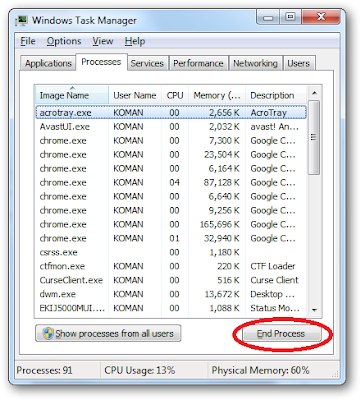
2. Uninstall fake BSOD Error 333 Registry Failure pop-up related program in Control Panel
Windows 7/Vista users:
1) Click "Start" ("Windows Logo" in the bottom left corner of your desktop), choose "Control Panel".
2) Locate "Programs", "Uninstall a Program".
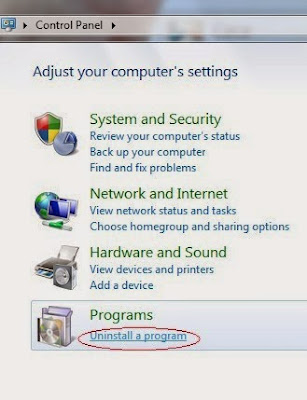
Windows 8 users:
1) Click "Charms bar", choose "Settings" and click "Control Panel".
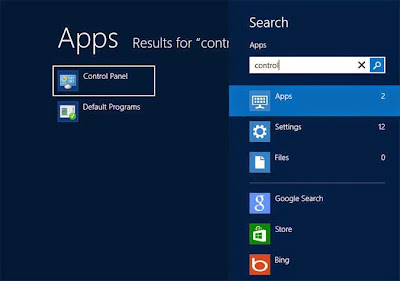
3) Look for suspicious or unfamiliar program, select its entry and click "Uninstall".
3. Remove fake BSOD Error 333 Registry Failure pop-up from web browsers
Internet Explorer:
1) Open Internet Explorer, click on the gear icon, choose "Internet options", go to General tab, enter your favorite website address, click "Apply".

3) Click "OK" to close the Internet Options window.
4) Click "Start", find "Internet Explorer" and then right click on it, choose "properties".
5) On the pop-up window, go to Shortcut tab, delete the extension after ".exe" in Target, click "OK".

Google Chrome:
1) Open Google Chrome, click on the icon menu (top right), select "Settings".
2) Go to On startup option, click "Set pages", delete the unwanted website address and then "OK".

3) Go to Appearance option, check "Show Home button", and then click "Change".
4) On the pop-up window, delete the unwanted website address in Open this page option, click "OK", and then uncheck "Show Home button".
5) Go to History tab, click "Clear browsing date…" button. On the confirm window, click "Clear browsing date", and then close Chrome.

6) Click "Start", find "Google Chrome", right click on it, select "properties".
7) On the pop-up window, go to Shortcut tab, delete the extension after ".exe" in Target, click "OK".

1) Open Mozilla Firefox, click on the icon menu (top right) and select "Options".

3) Here select "History", click the "Clear Recent History…" button. On the pop-up window, click "Clear Now".

4) Click "Start", find "Mozilla Firefox", right click on it, select "properties". On the pop-up window, go to Shortcut tab, delete the extension after ".exe" in Target, click "OK".
4. Speed up your PC by using RegCure Pro
RegCure Pro is an advanced optimizer which is able to solve your computer system problems, remove your privacy items produced by online searches, delete junk files, uninstall malware and fix performance problems. You can download and use RegCure Pro with confidence for it doesn't contain any additional items or conflict with your current used antivirus program. Here shows how it works:
1) Free download RegCure Pro by clicking the below button.
2) Click the "Run" button to enter in installation process and then follow the instruction to install the program step by step.

3) When the program is successfully installed, double click on its desktop shortcut to open it. On the Overview tab, check all the scan settings and then click on the "Click to Start Scan" button to run a system scan on your computer.

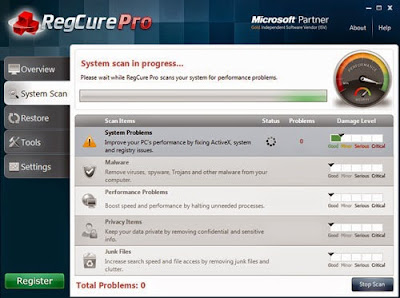
5) When the system scan is done, click on "Fix All" button to completely remove all the performance problems in your computer.
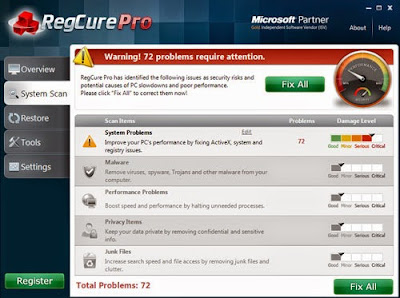
-Want a quicker way to get you out of current issue?
Solution B: Automatically Remove fake BSOD Error 333 Registry Failure pop-up with SpyHunter
SpyHunter is a powerful, real-time anti-spyware application designed to assist the average computer user to detect, remove, and protect their PCs from the latest malware attacks. Here shows how it works:
2. Click the "Run" button to enter the setup program and follow the installation steps until setup is complete.
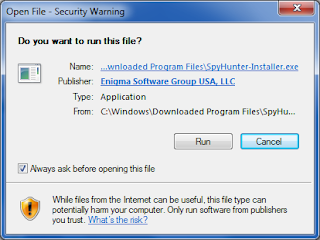
3. When the installation is complete, click the "Finish" button to exit the installation.
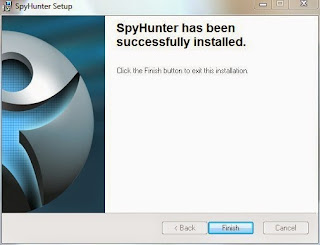
4. If SpyHunter does not automatically start, click the icon on your desktop or Start menu to open it.
5. Allow the program to scan by clicking the "Scan Computer Now!" button. If you would like to have a quick scan on your PC, please check the "Quick Scan" box; otherwise, uncheck it.

6. The first scan will take some time, please be patient while waiting for the scanning result.
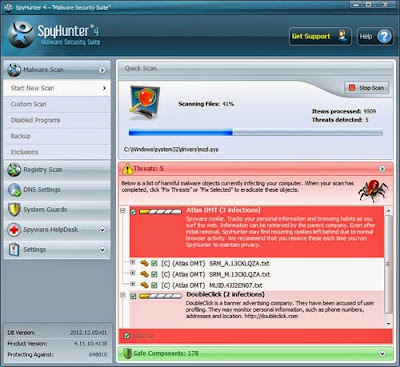
7. After the scan is done, you can see that all threats are successfully detected. Check the "Select All" box and then click the "Remove" button to fix all threats in your PC.

To Summarize:
fake BSOD Error 333 Registry Failure pop-up is really a trouble maker that should be kicked out of your computer immediately without any hesitation.
Download SpyHunter to Protect Your PC from Malicious Threats.
Download RegCure Pro to Fix Slow PC Performance.
Good Luck and be safe online.
Note: The free version of SpyHunter/RegCure Pro is only for malware detection. If SpyHunter/RegCure Pro detects malware on your PC, you will need to purchase its malware removal tool to remove the malware threats.


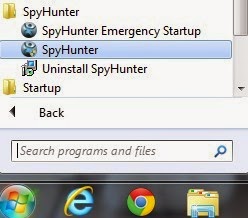
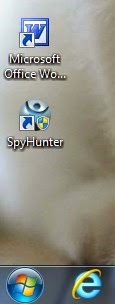
No comments:
Post a Comment